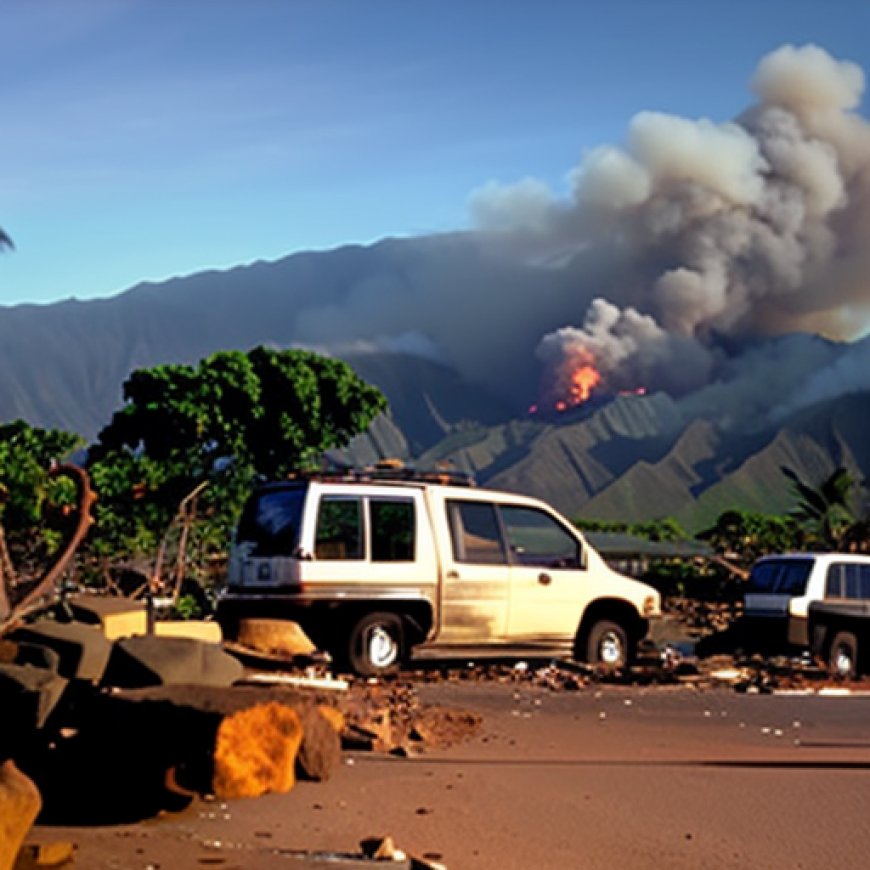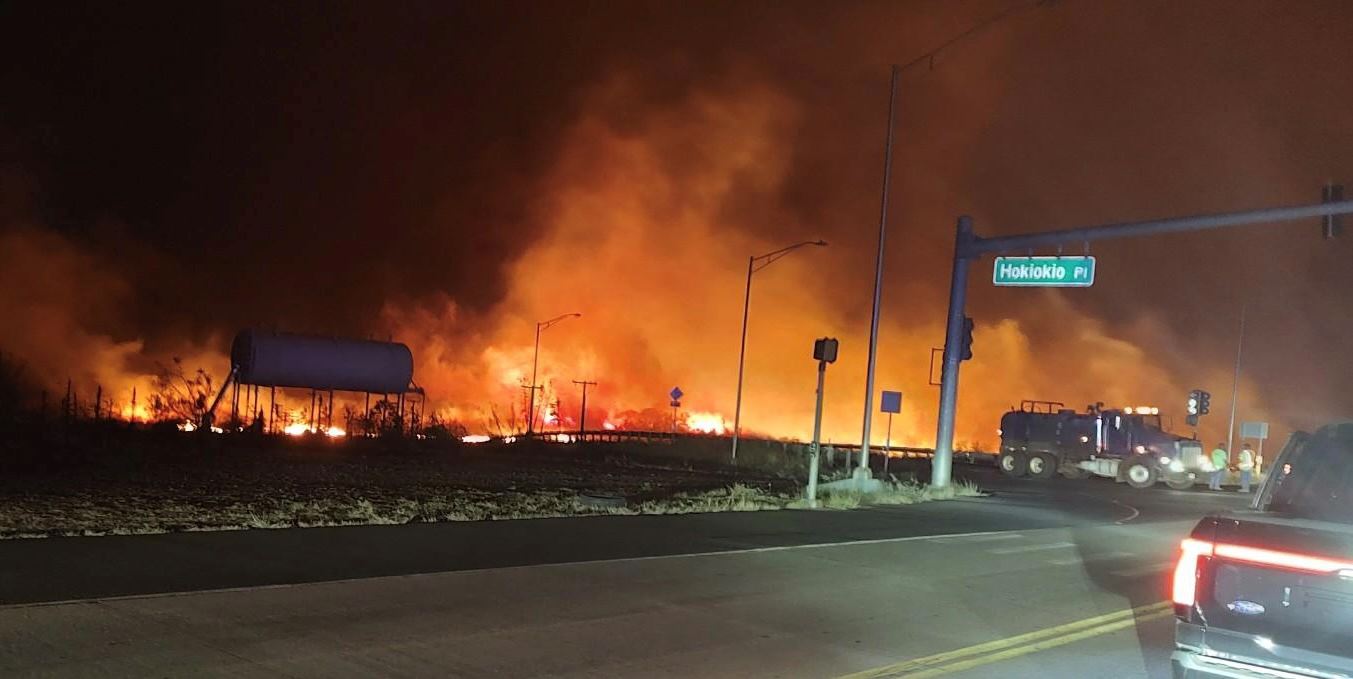Maui’s Deadly Wildfires Burn Through Lahaina – It’s A Reminder Of The Growing Risk To Communities That Once Seemed Safe
Maui's Deadly Wildfires Burn Through Lahaina – It's A Reminder Of ... DISCOVER Magazine


Wildfires in Lahaina, Hawaii: A Reminder of the Growing Risk to Communities

Introduction
On August 8 and 9, 2023, wildfires fueled by powerful winds swept through Lahaina, Hawaii, leaving behind a charred and smoldering landscape. This tourist town, which was once the capital of the Kingdom of Hawaii and is home to approximately 13,000 residents, was severely affected by the fires. Tragically, at least 36 people lost their lives, while others were rescued by the U.S. Coast Guard after seeking refuge in the ocean to escape the flames.
Fires continued to burn on August 10, both along Maui’s west coast and farther inland, as well as on the Big Island of Hawaii. The dry grasses and strong winds, influenced by Hurricane Dora passing to the south, contributed to the heightened fire risk.
It is worth noting that most fires in the U.S. are typically suppressed before they pose a threat to communities. However, in this case, the winds were too strong to allow helicopters to assist in containing the fires on the first day, leaving firefighters to battle the blazes from the ground.
In response to the emergency situation, Lieutenant Governor Sylvia Luke declared a state of emergency and activated the National Guard for assistance. Travelers were urged to stay away from the affected areas.
Video Footage
Video shared by Maui Now shows the fires and strong winds.
Lines of flames move quickly through the hills in Maui on the night of August 8, 2023. Video by Clint Hansen.
Increasing Risk of Wildfires in the U.S.
Wildfires have become a growing risk in many areas of the U.S. that were once considered safe. Over the past two decades, an alarming 21.8 million Americans have found themselves living within 3 miles (5 kilometers) of a large wildfire. Of these, nearly 600,000 individuals had their homes located within the wildfire perimeter, directly exposing them to the fire. This number has more than doubled from 2000 to 2019, as indicated by recent research.
Contrary to popular belief, the population growth in high-risk areas only accounts for a small portion of the increase in wildfire exposure. Instead, three-quarters of this trend can be attributed to intense fires that grow out of control and encroach on existing communities.
Impact of Climate Change on Wildfires
The occurrence of hot and dry weather conditions depletes moisture from plants and soil, leaving behind dry fuel that is highly susceptible to burning. Combined with strong winds, even a small spark from a power line, campfire, or lightning can ignite a wildfire that rapidly spreads.
Recent research conducted on wildfires in California has revealed that almost all of the increase in burned areas in the state can be attributed to anthropogenic climate change, which refers to climate change caused by human activities.
Factors Influencing Wildfire Exposure
Our analysis, conducted by a team of climate scientists, examined the boundaries of over 15,000 large wildfires across the lower 48 states and annual population distribution data. We aimed to estimate the number of people exposed to these fires and understand the reasons behind it.
While population growth in the wildland-urban interface, where houses are interspersed with forests, shrublands, or grasslands, has contributed to the increase in wildfire exposure, it only accounts for approximately one-quarter of the overall rise. The remaining three-quarters can be attributed to fires encroaching on existing communities. Although the total burned area has increased by 38%, it is the proximity of intense fires to towns and cities that puts lives at risk.
California, with the highest number of people exposed to fires, has experienced several wildfire catastrophes in communities that existed long before 2000. These catastrophes occurred during dry, hot, and windy conditions that have become increasingly frequent due to climate change.
Reducing the Risk of Wildfires
It is projected that the area burned by wildfires in Western states will continue to increase in the coming decades, even under conservative scenarios. The extent and intensity of these fires largely depend on warming trends. Therefore, reducing greenhouse gas emissions is crucial in slowing down the warming process. However, communities must also adapt to the growing threat of wildfires.
Developing community-level wildfire response plans, implementing measures to reduce human-caused ignitions of wildfires, and improving zoning and building codes are effective strategies for preventing fires from becoming destructive.
This article was updated on August 10, 2023, to reflect the death toll of 36 individuals. It is an update to an article originally published on July 3, 2023.
Mojtaba Sadegh, Associate Professor of Civil Engineering at Boise State University, contributed to this article.
Source: The Conversation
SDGs, Targets, and Indicators
1. Which SDGs are addressed or connected to the issues highlighted in the article?
- SDG 11: Sustainable Cities and Communities
- SDG 13: Climate Action
- SDG 15: Life on Land
2. What specific targets under those SDGs can be identified based on the article’s content?
- SDG 11.5: By 2030, significantly reduce the number of deaths and the number of people affected and substantially decrease the direct economic losses relative to global gross domestic product caused by disasters, including water-related disasters, with a focus on protecting the poor and people in vulnerable situations.
- SDG 13.1: Strengthen resilience and adaptive capacity to climate-related hazards and natural disasters in all countries.
- SDG 15.1: By 2020, ensure the conservation, restoration, and sustainable use of terrestrial and inland freshwater ecosystems and their services, in particular forests, wetlands, mountains, and drylands, in line with obligations under international agreements.
3. Are there any indicators mentioned or implied in the article that can be used to measure progress towards the identified targets?
- Number of deaths and people affected by wildfires
- Economic losses caused by wildfires
- Resilience and adaptive capacity to climate-related hazards and natural disasters
- Conservation, restoration, and sustainable use of terrestrial ecosystems
Table: SDGs, Targets, and Indicators
| SDGs | Targets | Indicators |
|---|---|---|
| SDG 11: Sustainable Cities and Communities | Target 11.5: By 2030, significantly reduce the number of deaths and the number of people affected and substantially decrease the direct economic losses relative to global gross domestic product caused by disasters, including water-related disasters, with a focus on protecting the poor and people in vulnerable situations. | – Number of deaths and people affected by wildfires – Economic losses caused by wildfires |
| SDG 13: Climate Action | Target 13.1: Strengthen resilience and adaptive capacity to climate-related hazards and natural disasters in all countries. | – Resilience and adaptive capacity to climate-related hazards and natural disasters |
| SDG 15: Life on Land | Target 15.1: By 2020, ensure the conservation, restoration, and sustainable use of terrestrial and inland freshwater ecosystems and their services, in particular forests, wetlands, mountains, and drylands, in line with obligations under international agreements. | – Conservation, restoration, and sustainable use of terrestrial ecosystems |
Note: The specific indicators mentioned in the article are implied based on the issues discussed and may not be explicitly stated.
Behold! This splendid article springs forth from the wellspring of knowledge, shaped by a wondrous proprietary AI technology that delved into a vast ocean of data, illuminating the path towards the Sustainable Development Goals. Remember that all rights are reserved by SDG Investors LLC, empowering us to champion progress together.
Source: discovermagazine.com

Join us, as fellow seekers of change, on a transformative journey at https://sdgtalks.ai/welcome, where you can become a member and actively contribute to shaping a brighter future.







